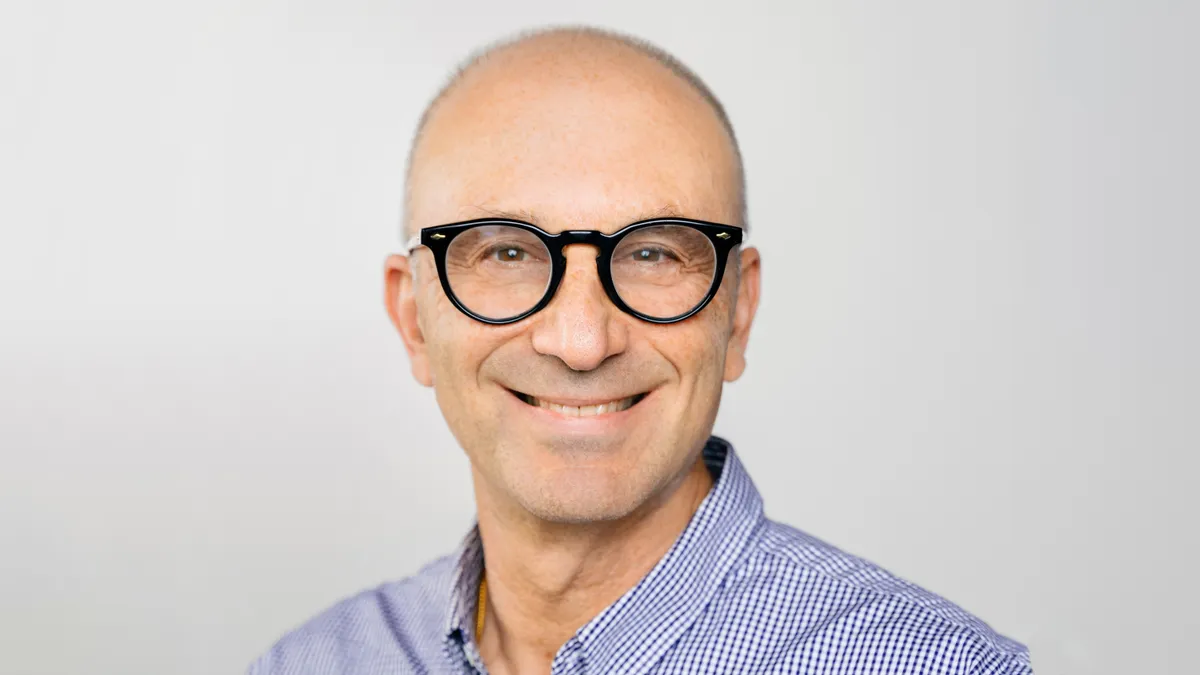Building a cancer pipeline is a daunting task, whether you're a multinational pharma giant running hundreds of trials or a small company with a single platform — risk and trust and a devotion to unmet medical need are all part of the process.
Some companies come to the annual meeting of the American Society of Clinical Oncology (ASCO) in Chicago with an ability to look back on how their house was built up from the foundation. Take Merck & Co., whose wildly successful immunotherapy Keytruda was barely a glimmer of hope when Eric Rubin joined the company. Now it's a mega-blockbuster and Rubin is senior vice president of early stage development in clinical oncology.
"Back when I joined Merck 14 years ago, there were about 12 oncologists in the group and we had a few compounds in the pipeline," Rubin says. "We now have about 150 oncologists with deep expertise in multiple tumor types, and if we're not the leading oncology company right now, we probably will be soon."
The company is building on the legacy that Keytruda created with new indications for the wide-ranging treatment, as well as new combination agents to target diseases that Keytruda can't quite reach alone. For example, the anti-LAG-3 antibody favezelimab with Keytruda has shown promise in Hodgkin lymphoma.
"Keytruda is a great base and it's really just wonderful to have that tool to work with," Rubin says. "And so while we do think there are some patients who are cured or treated by itself, many other patients are going to need to have combinations."
There's more than one way to build a sturdy oncology pipeline, and heads of oncology at some of the world's biggest drugmakers understand how far the industry has come and where it can go with a little strategic thinking.
Speed of science
The oncology field is moving at an incredible pace as the science advances rapidly to more tailored treatments. J&J's global oncology therapeutic area head, Peter Lebowitz, says this is the result of decades of work to understand the biology and come up with not just better drugs but better drug regimens to match the needs of certain cancers.
"In the overall field of oncology drug development, we're seeing massive advances, and it's not just that we select the right patients for the right drug, but we're actually getting to better biology and better drugs," Lebowitz says, attributing the growth to many factors coming together to impact patient outcomes. "And instead of individual drugs … we're actually beginning to build regimens around the drugs that we have, and that wasn't possible even 10 or 20 years ago because the drugs just weren't as good."
Similarly, Takeda's head of the U.S. oncology business unit, Dion Warren, has seen massive progress that is changing the face of the field.
"In the last decade or two, we continue to move in the direction of much more personalized medicines," Warren says. "Even just 10, 15, 20 years ago, a lot of the treatment was chemotherapy and a lot of blunt medicines to treat cancer on a broad scale, and what we've seen is an explosion of progress and evolution."
The populations that cancer companies treat these days are much smaller and specific, Warren says.
Focus on a cure
For J&J, it helps being the largest pharmaceutical company in the world. Even at its juggernaut size, cancer makes up about 30% of the company's drug sales and 15% of the company's entire revenue.
"At a place like J&J, we have massive amounts of resources going at this in terms of our R&D spend, partners that we engage with, the expertise we have in house — we can bring a lot to bear," Lebowitz says. But despite the size of the company, the oncology division operates with a great deal of focus in four areas — prostate, blood, lung and bladder cancers — which is not as expansive a list as other big pharma portfolios, Lebowitz says.
“And instead of individual drugs … we’re actually beginning to build regimens around the drugs that we have, and that wasn’t possible even 10 or 20 years ago because the drugs just weren’t as good.”

Peter Lebowitz
J&J global oncology therapeutic area head
At the ASCO meeting, the company is presenting results from a late-stage study of Imbruvica in mantle cell lymphoma, as well as trials that highlight the breadth of the pipeline, from bispecific antibodies to cell therapy.
"Our mission is to cure these cancers, not to develop great drugs," Lebowitz says. "That's part of it, but it is actually to get cures in place."
A five-point roadmap for J&J to do this, he says, includes having multiple highly active drugs working in different ways; finding drug regimens that work in combination or sequentially; have a measure for tumor clearance; treat with those regimens until disease is undetectable; and then treat a little longer to be sure.
"That approach has worked with lymphocytic leukemia, Hodgkin's disease and other cancers we've cured, and this is what we now need to do in some of these harder-to-treat cancers," Lebowitz says.
The company has four potential drugs for multiple myeloma, for example, that they are arranging into treatment regimens, and they are following the same roadmap for prostate and bladder cancer.
"We approach each one of the diseases this way and begin to build those regimens that we hope will lead us to potential cures," Lebowitz says.
Picking winners
In many ways, building a successful and sustainable pipeline requires not just the inventions that arise from within a single company but also betting on the right science from external sources to fit the overall vision.
"The first important point that we've recognized over the years is that innovation comes from anywhere and everywhere," Takeda's Warren says. "New inventions and ideas come from biotechs, other pharmaceutical companies, academia, you name it, so really trying to push and find that innovation and hold the same high bar is fundamental."
For Takeda, the immunotherapy M&A game is based on a "build-to-buy" model, in which they partner with early-stage companies with options to purchase — the strategy resulted in three acquisitions in a year. The Japanese company brought in Adaptate Biotherapeutics in January, GammaDelta Therapeutics in October 2021 and Maverick Therapeutics in March that same year.
"The first important point that we've recognized over the years is that innovation comes from anywhere and everywhere."

Dion Warren
Takeda head of the U.S. oncology business unit
Much of finding the right collaborators is knowing what to look for in the first place, Warren says.
"It starts with our strategy and where we see the field evolving," Warren says. "We have certain areas, and we're able to leverage that expertise to evaluate these potential opportunities."
And because jumping into a partnership with a company can be risky, particularly in the earlier stages of research, testing the waters is wise, he says.
"Through this build-to-buy approach, we're able to strike a partnership and learn and collaborate together on the science, and then if things move in a positive direction, we're able to purchase," Warren says. "So we de-risk these molecules both on the company culture fit and on the science."
At Merck, the popularity of Keytruda as a combination drug often brings collaborators right to its doorstep, Rubin says.
"One of the things that's worth noting is that we have what we call our external collaborations group, which is built upon the strength of Keytruda — because everyone wants to combine their drug with Keytruda," Rubin says. "We have hundreds of such studies that in some ways complement our internal pipeline because we see early data across very diverse mechanisms."
When looking at Eisai's Lenvima, Merck was so impressed with early combination data that they built the treatment into a business development effort to have greater access.
"This really puts us in a unique position to be able to select compounds that are quite active in combination with Keytruda," Rubin says.
When it comes to building a pipeline through collaboration, J&J leverages its vast network of incubation and venture capital to see which programs are worth bringing in, Lebowitz says.
"If you are truly meeting the unmet need and you have transformational drugs, that sets you up for success," Lebowitz says. "In order to have the best science, we have to have an open innovation approach, which means that often the best science is outside the walls of J&J."
J&J has had a long track record of successful partnerships, Lebowitz points out. The company's two best-selling cancer drugs came about as a result of partnerships — Imbruvica with AbbVie and Darzalex with Genmab. More recently, the CAR-T therapy Carvykti was the result of a partnership with Legend Pharma.
"We've really gotten expert at doing collaborations where the sum is greater than the parts, and the idea there is that we like to do deals with companies who have a similar philosophy as us," Lebowitz says. "We find those companies who bring something that we just don't have."
The universe of cancer innovation has grown tremendously in a short amount of time, particularly with that innovation now coming from all corners of the world, Lebowitz says.
"If you just expect to see everything in all of oncology and know exactly what the right thing is, there's a flood of material to review," Lebowitz says. "But if you are truly focused on certain diseases and if you focus on certain approaches that you want to take, then it becomes an easier exercise that you can actually see all the things that you need to see in order to be the best in those diseases."
It's still a lot of work, Lebowitz admits, and J&J has a large infrastructure in place to make it happen — business development teams, innovation centers, venture capital and more.
"We've been successful at that, and we've been able to keep up with the massive expanse of biotech companies and do the right deals at the right times," Lebowitz says.
The smaller players
Of course, oncology drug development doesn't just happen at the biggest of pharmaceutical companies — smaller players are also looking to build pipelines one step at a time.
At Nanobiotix, CEO Laurent Levy says you have to start somewhere. The company's nanotechnology-based platform takes what Levy calls a physics approach to cancer treatment rather than chemical or biological — their nanoparticles improve radiation therapy as a means of eradicating tumors.
From its ongoing late-stage study in head and neck cancer, the company is also building the platform for other solid tumors typically treated with radiation therapy.
"We've developed the first franchise in head and neck, and then we can expand into other indications," Levy says. "Doing so, we can not only create value for the company being focused on one specific area in oncology, but still prepare for the future with other indications."
And Nanobiotix is on the other side of the collaboration coin, getting attention from big pharmas looking to broaden their horizons.
"Now that we are moving into a larger number of indications, pharmas start to see the broad and deep potential of what our product could be," Levy says. "They are fighting to find new products to go against their patterns."
Another company looking to solve problems in cancer using an outside approach is the Israeli-American biotech Biolojic Design, which uses computational antibody design to attack new targets. And the time is ripe for "smarter" drugs, says CEO Yanay Ofran.
"The most significant revolution we've seen over the last years was the understanding that we can get amazing outcomes by not directly attacking cancer cells but by modifying the immune system," Ofran says. "What we need to do now is come up with smarter drugs that will fine-tune the way in which we control the interface between the immune system and the cancer to achieve a better outcome."
That could also change the business of cancer treatments, Ofran says.
"Instead of having blanket molecules that are sold to everyone, we need to start seeing business thinking around molecules that are tailored for smaller populations and are part of an arsenal of ammunition that is used over time," Ofran says. "Because if we're successful in this, each drug will sell less, but we'll have more dramatic outcomes."
Ofran knows that in cancer, as in many fields of medicine, what matters most is the end result.
"Technology is sexy and appealing but what drives deals is data," Ofran says. "You can tell a wonderful story about how this antibody worked and what it did in vitro and how many mice you're able to cure with it — and this is all exciting and lovely — but what makes a deal eventually is clinical data."




















